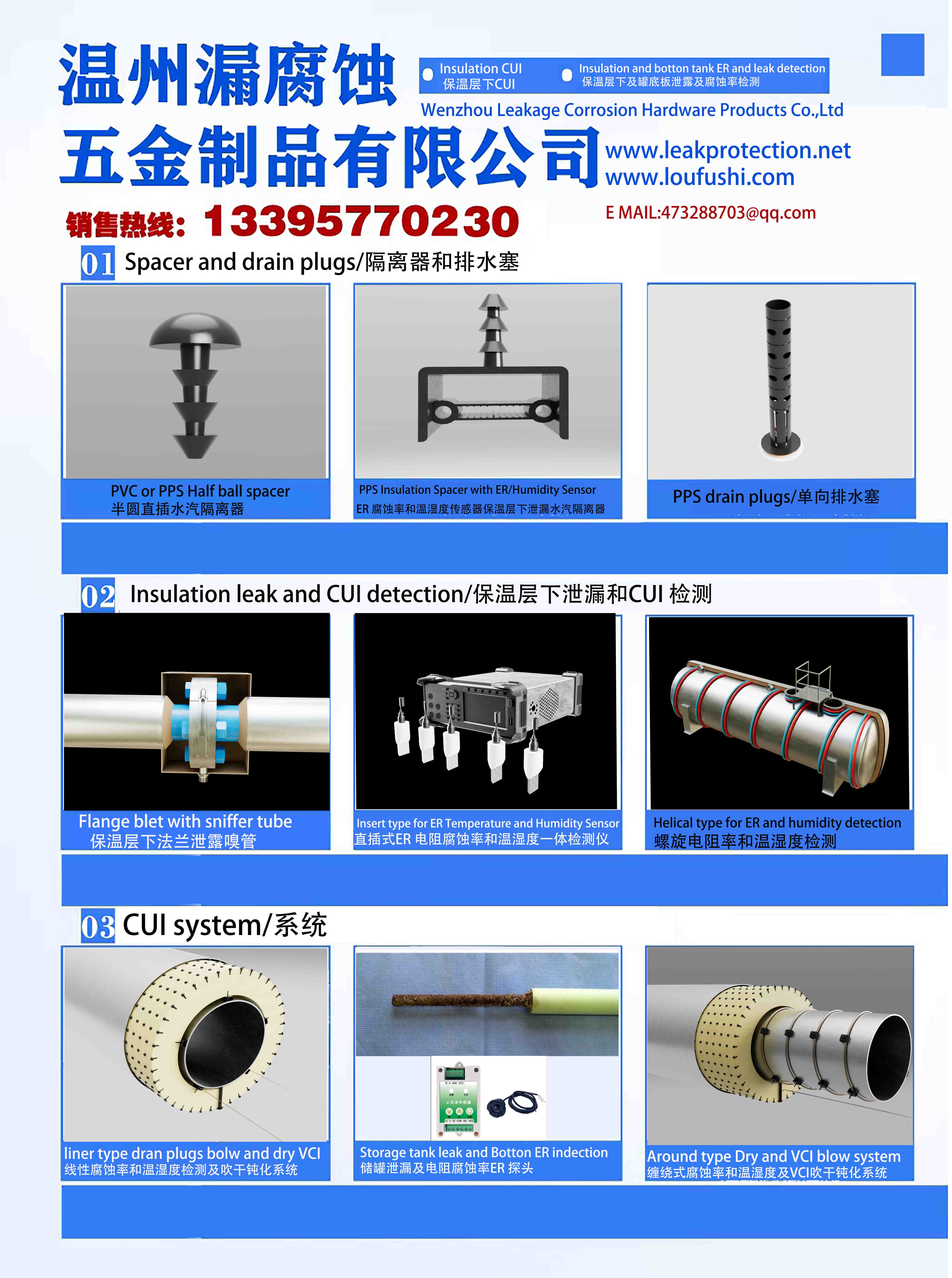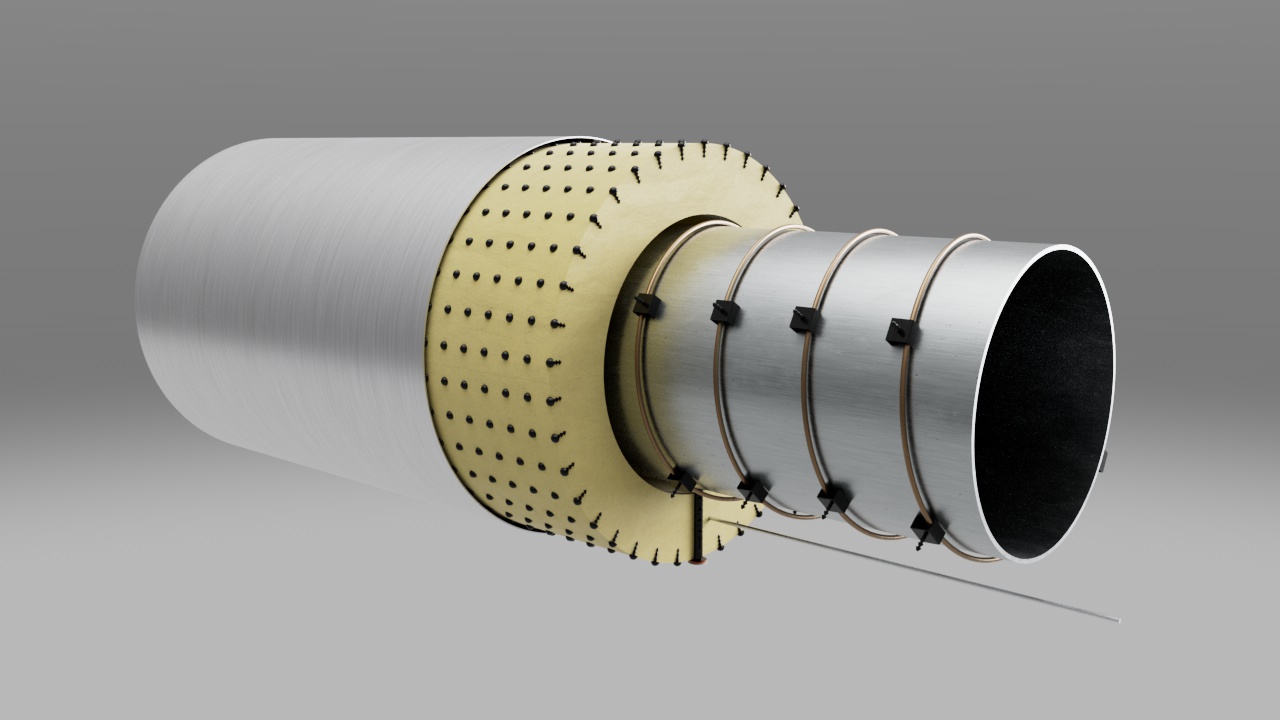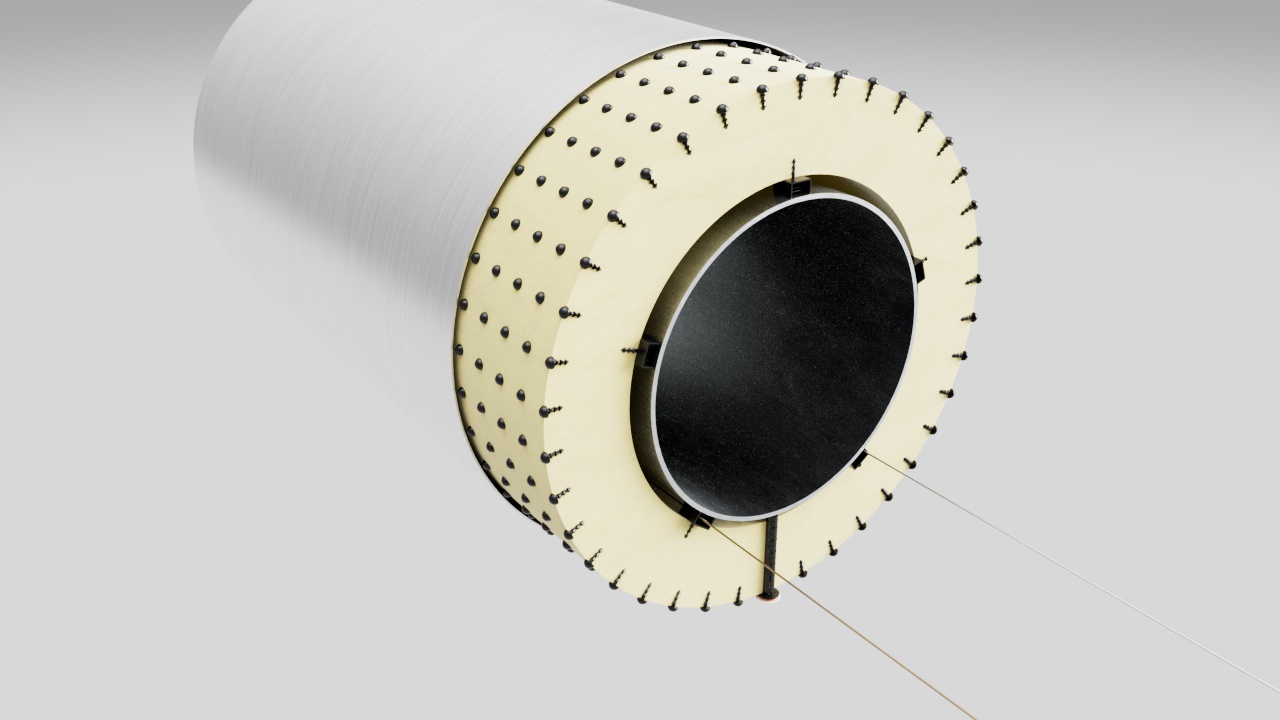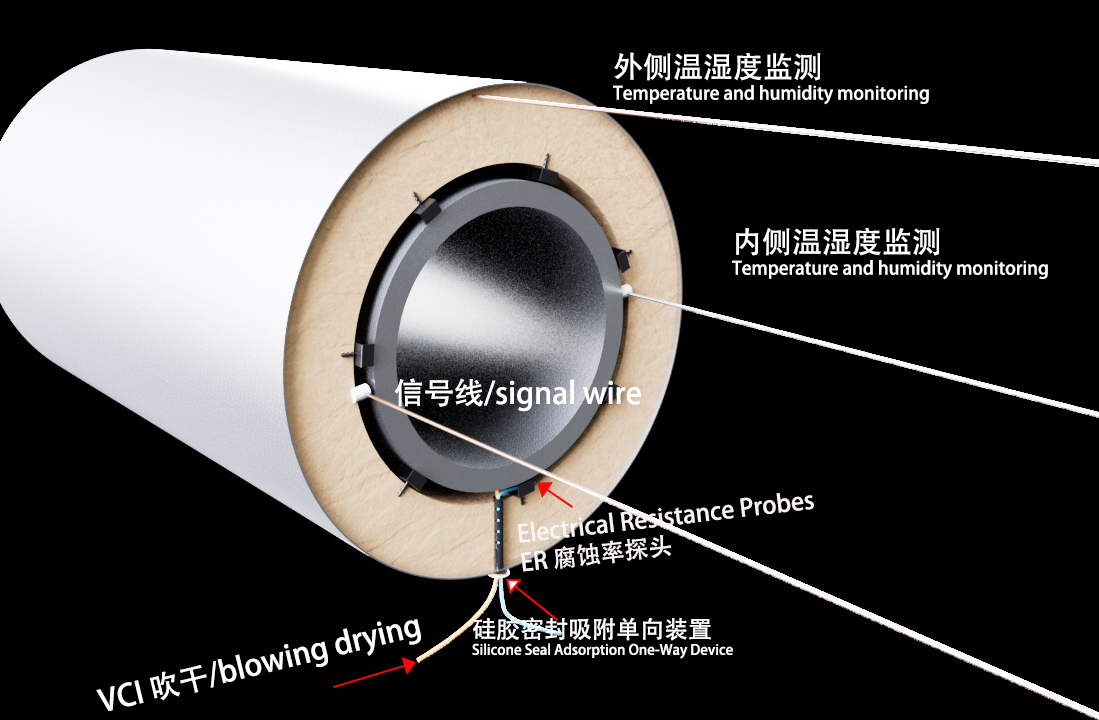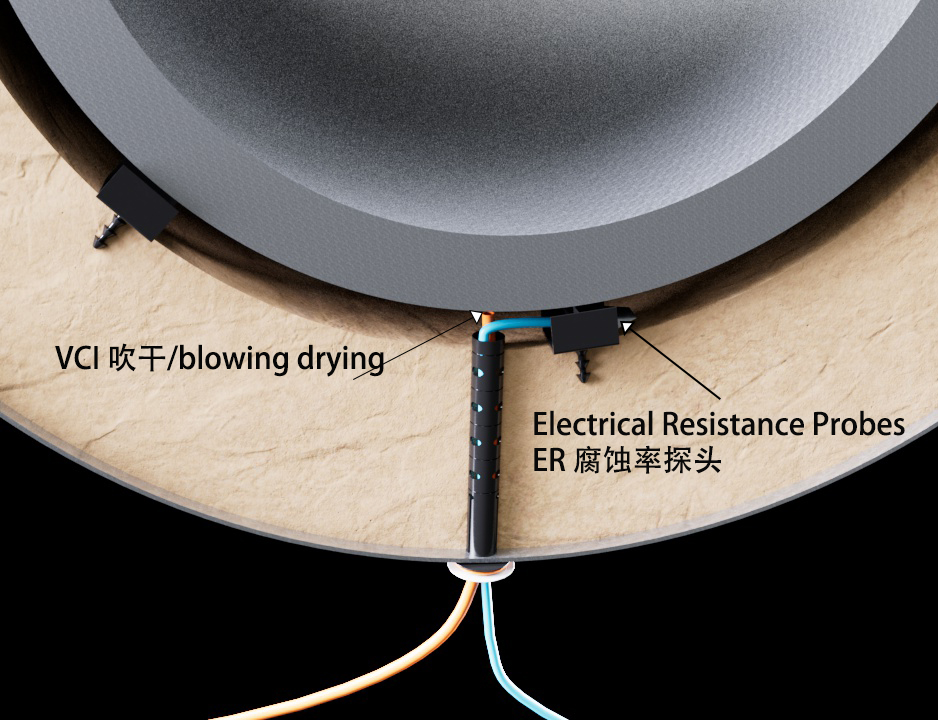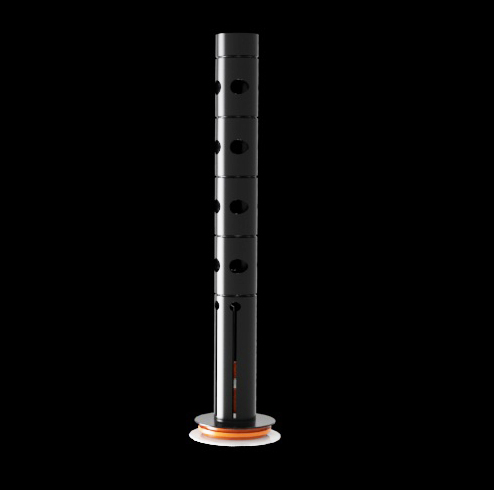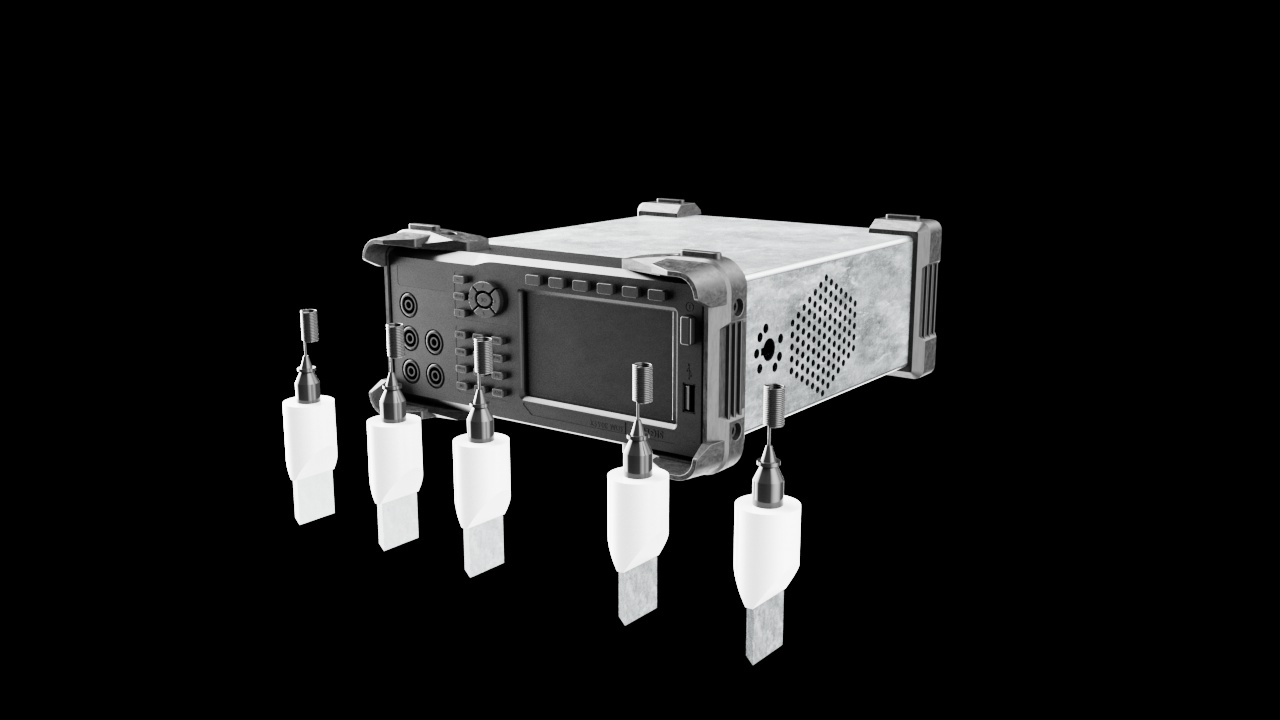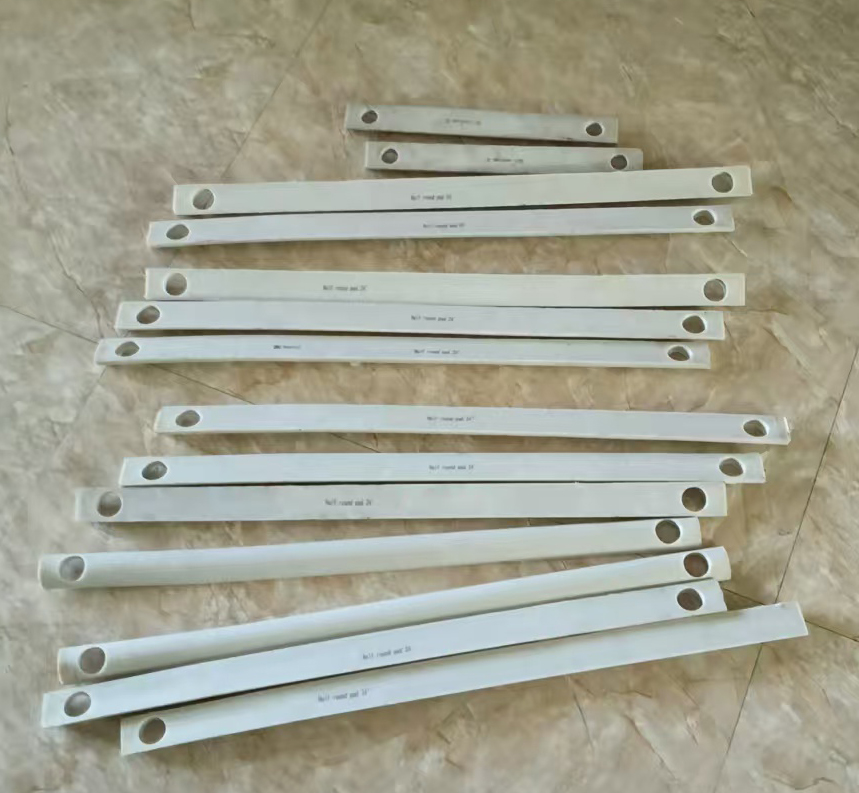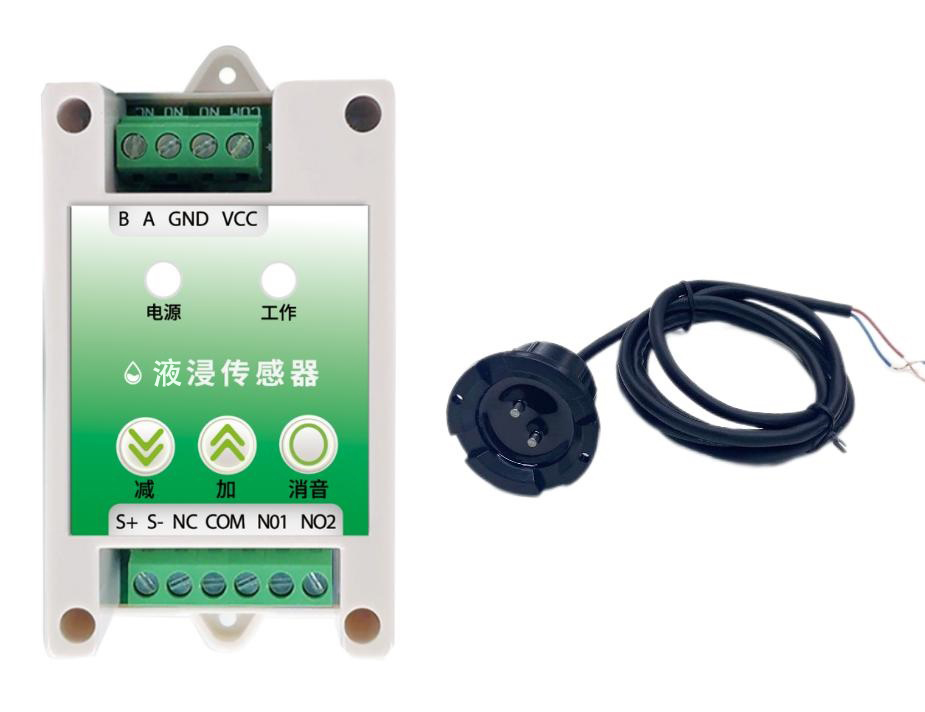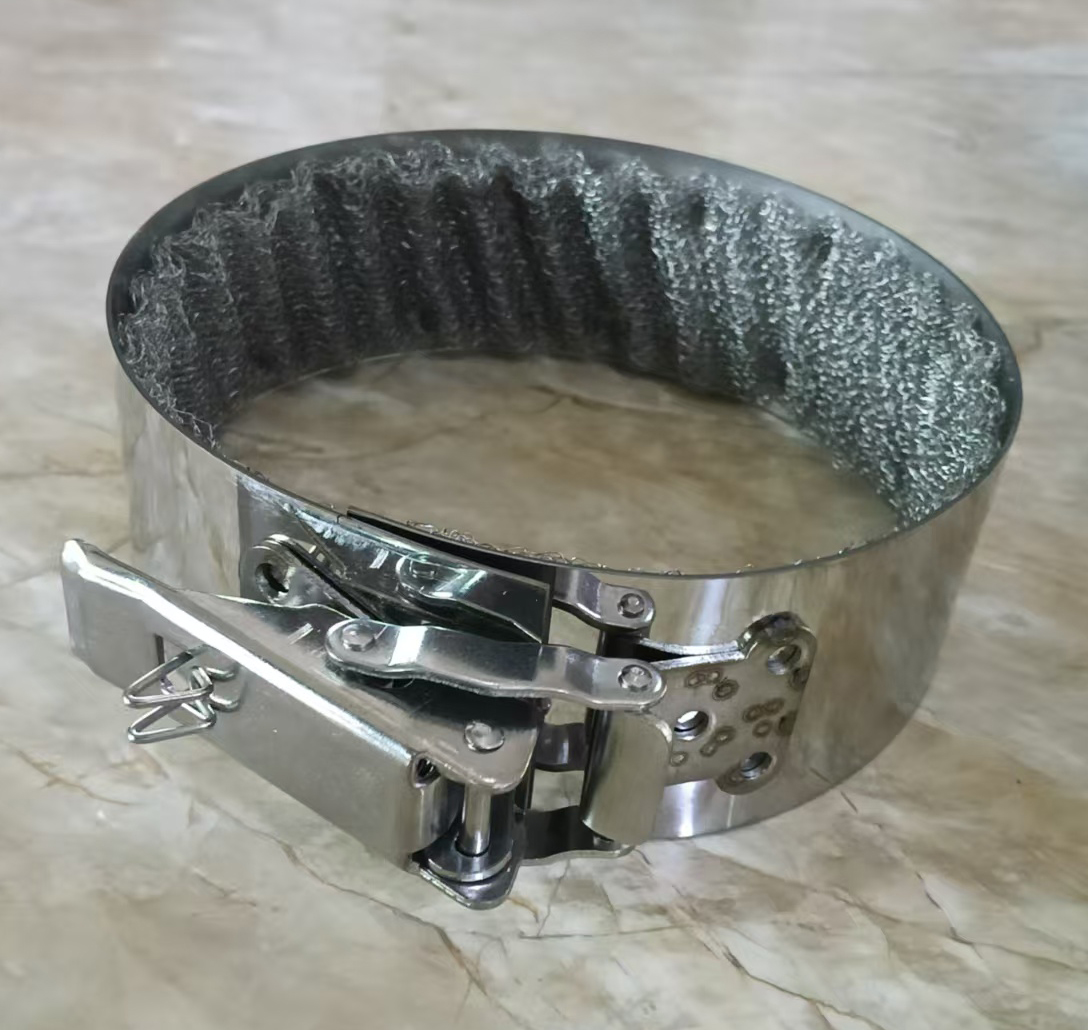Integrated System for Under-Insulation Monitoring with VCI Blowing Dryers
Integrating insulation temperature, humidity, and Electrolytic Resistance (ER) detection systems, alongside VCI (Vapor Corrosion Inhibitor) blowing dryers, creates a comprehensive solution for monitoring and maintaining insulation integrity. This integrated system is particularly effective in preventing Corrosion Under Insulation (CUI), leaks, and other damage that can compromise the performance and lifespan of insulated structures.
Key Components of the Integrated System: Insulation Temperature Detection Monitoring the temperature under insulation is crucial for identifying potential issues like heat buildup that could lead to material degradation or insulation failure. Consistent temperature readings help track areas that might require additional protection or insulation adjustments.
Humidity Detection Moisture accumulation beneath insulation can accelerate corrosion, particularly when combined with high temperatures. By using humidity sensors, the system can detect excess moisture early, providing warnings before it leads to issues like corrosion or mold formation.
Electrolytic Resistance (ER) Detection ER detection measures the electrical resistance of the insulation. A drop in resistance often indicates the presence of moisture, a primary factor in corrosion. Regular monitoring of ER levels enables early identification of areas vulnerable to CUI, providing a proactive approach to preventing damage.
VCI Blowing Dryers Vapor Corrosion Inhibitors (VCIs) are chemical compounds that prevent corrosion by creating a protective vapor layer around metal surfaces. VCI blowing dryers work by releasing these inhibitors in areas prone to moisture buildup, like under insulation, ensuring the environment remains dry and protected from corrosion.
Benefits of Integrating These Systems: Real-Time Monitoring
Using IoT-enabled sensors, this system provides continuous real-time data on temperature, humidity, and ER levels. This allows for immediate detection of any abnormalities that could indicate the onset of CUI or leaks, thus preventing further damage.
Automated Control
The integration of VCI blowing dryers into the system allows for automated responses to detected moisture or temperature abnormalities. When humidity or ER levels exceed predetermined thresholds, the system can trigger the VCI dryers to release inhibitors, keeping the area dry and preventing corrosion.
Proactive Corrosion Prevention
By combining humidity and ER monitoring with VCI blowers, this system offers a proactive approach to preventing corrosion before it even begins. The automated response to rising moisture or temperature levels minimizes the risk of CUI, extending the lifespan of both the insulation and the underlying structure.
Improved Energy Efficiency
https://book.yunzhan365.com/raywz/mjpk/mobile/index.html
Maintaining the proper temperature and moisture conditions under insulation ensures that insulation performance remains optimal. This leads to greater energy efficiency, as the system can reduce heat loss, maintain stability, and ensure the structure is protected from environmental factors.
Sustainable Maintenance
This system supports sustainable practices by reducing the need for manual inspections, repairs, and replacements. By addressing insulation issues early on, the system helps optimize maintenance schedules, save resources, and reduce overall operational costs.
Applications: Industrial Systems: In facilities like refineries, power plants, and chemical plants, insulation plays a critical role in maintaining temperature and preventing damage. Integrating these systems ensures the long-term reliability of these high-stakes environments.
Energy Efficiency Projects: Optimizing insulation conditions in commercial or residential buildings to maintain optimal thermal efficiency and reduce energy consumption.
Corrosion Prevention in Harsh Environments: In industries such as oil and gas, marine, and manufacturing, where exposure to moisture and corrosive elements is common, this integrated system can significantly reduce maintenance costs and prevent unexpected equipment failures.


